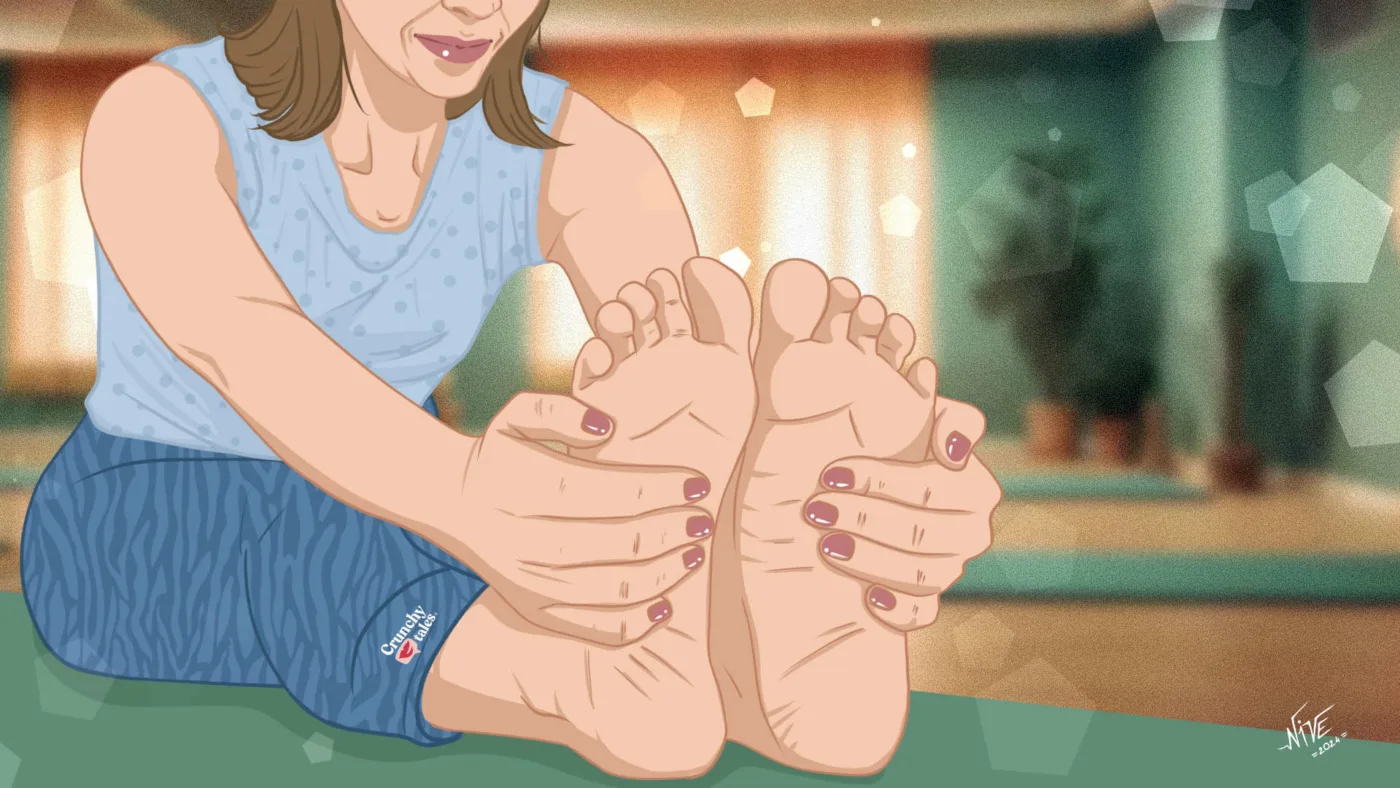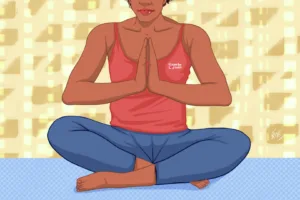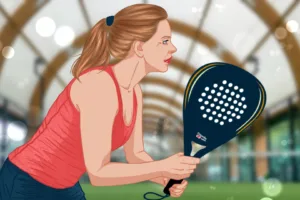Empower Your Feet: The Transformative Benefits of Toe Yoga for Midlife Women
Did you know that our feet are complex, supporting us with 26 bones, 33 joints, and over 100 muscles? Our toes, in particular, play a crucial role in balance, alignment, and overall energy. Strengthening their muscles can help prevent falls, especially in older adults.
According to a recent study, approximately 20% to 45% of individuals aged 65 and older experience foot problems, which include musculoskeletal issues, peripheral neuropathy, aching feet, stiffness, or overall pain.
That’s why it’s important to take care of your feet and toes, especially when considering how far they have taken us in our life journey. Unfortunately, feet and toes can be left forgotten. But imagine how much we could gain if we treated them with the same care as our face or hands.
It’s time to bring them into our daily routine and make Toe yoga a new favourite practice for strength, stability, and some well-deserved self-care.
What Exactly Is Toe Yoga?
Picture it like a gentle dance for your toes where each one moves individually. Toe Yoga involves stretches and exercises for your toes and feet.
At first, it might feel a bit tricky, but patience brings progress, and you don’t need to be a contortionist or have yoga experience; it’s all about small, focused movements.
If you’re suffering from foot pain, Toe yoga exercises may be able to bring you relief, promoting good balance, posture, and support for your body.
Toe Yoga: Easy Practices to Try at Home
Ready to give it a try? Here are a few simple ways to begin your Toe yoga practice in the comfort of your home:
- The Pada Bandha
Start by standing with your feet hip-width apart, pressing evenly into all four corners of your feet. Slowly raise each toe one by one, then lower them while keeping them spread wide. This action supports the arches, giving a light, energized feel that travels up your legs. - Mountain Pose, or Tadasana
Stand with feet parallel, keeping the toes spread and grounded. Roll your weight gently from the outer to inner edges of each foot, activating the entire foot structure. Picture each toe as connecting you more deeply to the earth—providing stability, balance, and energy from the ground up. - Mindful Walking
Whether walking barefoot or in comfy shoes, practice lifting your toes slightly with each step. This simple adjustment helps you engage your arches and keep your foot muscles active. Barefoot walking, even just around the house, strengthens foot muscles and helps realign natural walking patterns.
Mike Varshavski, DO, commonly known as “Dr. Mike,” emphasizes the significance of Toe yoga for overall foot health and its broader implications for the body. “When we’re thinking about healthy feet, it’s not just about making sure the foot is healthy for the sake of the foot. The foot is representative of the entire body”, he says. “Whenever we have issues in the foot, it usually also ends up translating to joints higher up, including the ankle, the knee, the hip, and the lower back. Toe yoga helps develop neuromuscular control of the foot, and neuromuscular control is incredibly important when it comes to injury prevention.”
Benefits Of Toe Yoga For Women Over 50
For women over 50, integrating Toe yoga into daily life offers a powerful way to improve their well-being, stay active and grounded. Here’s why Toe yoga is a fantastic addition to your daily routine.
- Improves Balance and Stability
Balance tends to decrease with age, and since our feet are our foundation, strengthening the toes can make a significant difference. Toe yoga helps improve control over individual toe movements, which enhances stability when walking, standing, and even climbing stairs. Each movement in toe yoga focuses on strengthening the tiny muscles in your toes, which in turn supports your balance. - Builds Foot Strength and Mobility
Foot strength may seem minor, but strong feet are vital for maintaining a healthy gait, preventing falls, and staying active without discomfort. The repetitive exercises in toe yoga increase flexibility and strength in the foot’s muscles, tendons, and ligaments. These movements can prevent stiffness, helping you stay nimble and comfortable. - Enhances Circulation and Reduces Swelling
With age, blood circulation can slow, and feet are often the first to feel it. The subtle movements in toe yoga encourage blood flow, which can reduce swelling and help with varicose veins. Regular practice is especially helpful in managing issues related to poor circulation and can relieve that heavy or achy feeling in the legs and feet. - Reduces Foot Pain and Common Foot Issues
Toe yoga exercises can target and help alleviate common foot problems like plantar fasciitis, bunions, and even arthritis pain. By stretching and activating the muscles around your toes, these exercises relieve pressure, reduce inflammation, and prevent pain from foot-related ailments. It’s a gentle approach to strengthening the feet without the strain of more intense exercises. - Promotes Mindful Walking and Better Posture
As we become more mindful of our foot placement and toe alignment, we naturally adopt better posture and body awareness. Practising Toe yoga can help us walk more consciously, reducing strain on other parts of the body like the knees and lower back.
How Often Should I Practice Toe Yoga For Best Results?
To achieve the best results from Toe yoga, it is recommended to practice regularly, at least once or twice daily. This can be as brief as two minutes per foot during each session
While two minutes per foot is a good starting point, you can gradually increase the duration as you become more comfortable with the exercises. Mike Varshavski, suggest practising Toe yoga about three times a week unless you are recovering from an injury, in which case daily practice may be necessary.
Before starting toe yoga, consider rolling a small massage ball under your foot for a few minutes to activate the foot’s receptors, enhancing the effectiveness of the exercises.
Taking Care of Your Feet
To fully enjoy the benefits of Toe yoga, however, it’s essential to prioritize foot care. Your choice of footwear, for instance, can play a crucial role in foot health. Ill-fitting or unsupportive shoes can lead to long-term damage, so opt for styles that allow your toes to spread comfortably and avoid shoes that pinch.
While ballet flats may appear comfortable, they often lack the necessary support, forcing your toes to work harder to keep them on. On the other hand, heels can be acceptable if you alternate them with supportive sneakers. Failing to do so may lead to shortened calf muscles over time.
If you wake up with sharp pain in your sole or heel, it’s a clear signal from your feet that it’s time to reassess your footwear choices and your foot health ensuring that every step forward is a steady and balanced one.
Like this post? Support Us or Sign up to our newsletter to get more articles like this delivered straight to your inbox!






This Post Has 0 Comments